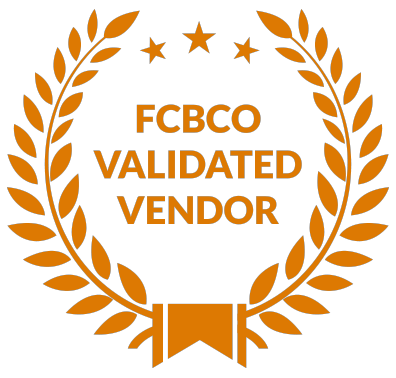Innovations in E-Commerce Fulfillment: What You Need to Know
Innovations in E-Commerce Fulfillment: What You Need to Know
…
E-Commerce Fulfillment
E-commerce has skyrocketed, and with it, consumer expectations. No longer is fast delivery the sole differentiator—customers demand flexibility, transparency, sustainability, and personalization, all while expecting seamless service across multiple channels. The key to thriving in this competitive landscape? Embracing cutting-edge e-commerce fulfillment strategies that not only meet but exceed those expectations.
So, what do you really need to know about modern e-commerce fulfillment? Here’s a breakdown of the most innovative strategies that will future-proof your business, optimize operations, and turn fulfillment from a necessary task into a competitive advantage.
1. Customer-Centric Personalization: The Ultimate Differentiator
Modern consumers are tired of one-size-fits-all approaches. They want a personalized experience that makes them feel like more than just a number. E-commerce fulfillment is no longer just about getting packages from point A to point B. It’s about customizing the journey so that each customer feels valued and understood.
For instance, companies leveraging advanced data analytics are already customizing delivery options based on previous buying behaviors. Imagine a loyal customer being offered free express shipping during the holiday season or receiving personalized product recommendations at checkout based on their shopping history. Fulfillment that recognizes and rewards customers creates emotional connections—and that’s where loyalty is built.
Why It’s Essential: This level of personalization doesn’t just improve customer satisfaction; it builds long-term relationships. Customers who feel personally valued by your brand are far more likely to return and make repeat purchases. In a marketplace flooded with competitors, customer-centric fulfillment becomes a key differentiator that drives business longevity.
2. Agile, On-Demand Fulfillment: Efficiency Meets Flexibility
In a world where next-day delivery has become the norm, agility is no longer a nice-to-have—it’s a necessity. But speed alone isn’t enough. Customers also want flexibility in how they receive their goods, whether it’s same-day delivery, in-store pickup, or even locker drop-offs.
An optimized e-commerce fulfillment strategy should be built for agility—reacting not just to customer needs but to market shifts as well. For example, using predictive analytics and AI to anticipate peak demand can streamline warehouse operations, minimizing bottlenecks. Or, employing cloud-based inventory systems to allow real-time updates across multiple sales channels keeps things seamless, preventing stockouts and fulfillment delays.
Why It’s Essential: Agility and flexibility are the backbone of a resilient e-commerce strategy. With customers placing a premium on speed and convenience, the ability to rapidly adjust to demand fluctuations ensures your business can keep pace without missing a beat.
3. Embracing Sustainability: It’s About More Than Just Going Green
Sustainability is no longer a trend; it’s a requirement. Modern consumers care about their carbon footprint, and they expect the brands they support to do the same. But sustainability in e-commerce fulfillment is more than just using recyclable packaging or minimizing emissions. It’s about designing an eco-friendly supply chain that’s built to last.
Think about innovations like eco-friendly packaging made from renewable resources, optimized transportation routes that cut down on fuel consumption, or partnering with fulfillment providers who use green energy in their warehouses. Some companies are even exploring “green” delivery methods like drones or electric vehicles to minimize their environmental impact.
Why It’s Essential: Beyond the environmental benefits, embracing sustainability improves your brand’s reputation and attracts eco-conscious consumers. It’s not just a moral imperative but a business strategy that differentiates you in a crowded market. Plus, sustainable practices often lead to cost savings over time through reduced waste and resource efficiency.
Assess Current Fulfillment Efforts. Take Quiz Now!
4. Data-Driven Fulfillment: Predicting Customer Needs with Precision
The power of data cannot be overstated in modern e-commerce. Predictive analytics is revolutionizing the way fulfillment centers operate. By analyzing customer purchasing habits, search patterns, and even weather forecasts, companies can better predict what products will be in demand at any given time. This allows for smarter inventory management, reducing the risks of overstocking or stockouts.
Imagine knowing that a spike in demand for winter coats is coming because your analytics have shown a sharp drop in temperature across key regions. Having the right products on hand, in the right location, at the right time ensures seamless fulfillment without unnecessary delays or surplus inventory.
Why It’s Essential: Data-driven fulfillment is the key to reducing inefficiencies and optimizing operations. With better forecasting, you can avoid costly mistakes like over-ordering, warehouse clogging, or excessive markdowns. Ultimately, it ensures that your business can scale smoothly while meeting customer demand with precision.
5. Omnichannel Fulfillment: Meeting Your Customers Where They Are
Omnichannel fulfillment is no longer optional—it’s expected. Today’s consumers shop across multiple channels—whether it’s from their laptop, smartphone, or in-store—and they want a consistent experience regardless of how they engage with your brand. That’s where omnichannel fulfillment comes in.
Companies that have mastered omnichannel fulfillment are able to provide seamless service across all platforms. This means integrating systems that allow inventory visibility in real-time across all channels, whether you’re shipping from a centralized warehouse, a local store, or a third-party logistics provider. And it’s not just about shipping—returns, exchanges, and customer service should be just as streamlined.
Why It’s Essential: The modern consumer expects seamless, cross-platform service. Omnichannel fulfillment ensures you’re meeting customers where they are—without friction. Plus, it’s critical for business scalability and provides more touchpoints for customer interaction, driving both sales and brand loyalty.
6. Technology Meets Humanity: Balancing Automation and the Human Touch
In the rush to adopt technology, it’s important to remember that fulfillment is still, at its core, about delivering a positive customer experience. While automation is key for efficiency—think AI-driven picking systems or robotics that reduce labor costs—the human element can’t be overlooked. Excellent customer service, transparent communication, and thoughtful interactions at every touchpoint ensure that you’re not just meeting expectations but building meaningful relationships.
Why It’s Essential: While technology powers efficiency, the human touch drives brand loyalty. Balancing both ensures your fulfillment operations are optimized for speed, accuracy, and customer satisfaction, creating a lasting impact that goes beyond the transaction.
At the End of the Day…
The future of e-commerce fulfillment lies in innovation. From personalization and agility to sustainability and omnichannel integration, the companies that embrace these strategies will lead the way. It’s no longer just about shipping products—it’s about creating a fulfillment experience that delights customers and builds loyalty.
By optimizing your operations now, you’re not just meeting the demands of today’s consumers—you’re future-proofing your business for years to come. So, what’s your next step? Partner with a forward-thinking fulfillment provider that can help you implement these game-changing innovations. The future of your business depends on it.
Interested in learning more? Give us a call, we’d love to chat!




